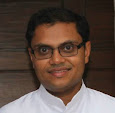here is the abstract of my Minor Thesis. bit technical, but will give an idea about what i'm doing.. have a look.. good luck..
Abstract
----------
Commercial Content Delivery Networks create their own network of servers around the globe to effectively deliver Web content to the end-users. The peering of Content Delivery Networks (CDN) would increase the efficiency of commercial CDNs. But still the high rental rates resulting from huge infrastructure cost make it inaccessible to medium and low profile clients . Academic models of peer-to-peer CDNs aim to reduce the financial cost of content distribution by forming volunteer group of servers around the globe. But their efficiency is at the mercy of the volunteer peers whose commitment is not ensured in their design. We propose a new architecture that will make use of the existing resources of common Internet users in terms of storage space, bandwidth and Internet connectivity to create a Distributed Content Delivery Network (DCDN). The profit pool generated by the infrastructure savings will be shared among the participating nodes (DCDN surrogates) which will function as an incentive for them to support DCDN. Since the system uses the limited computing resources of common Internet users, we also propose a suitable load balancing (LB) algorithm so that DCDN surrogates are not burdened with heavy load and requests are fairly assigned to them. Simulations have been carried out and the results show that the proposed architecture (with LB) can offer same or even better performance as that of commercial CDN.
Friday, June 22, 2007
Tuesday, June 19, 2007
Subscribe to:
Posts (Atom)
About Me

- പുതിയ കേരളം പുതിയ ഭൂമി
- Jaison Paul Mulerikkal is the Vice Principal of Rajagiri School of Engineering and Technology (RSET), Kochi. He was the Principal of Jyothi Engineering College (JEC), Cheruthuruthy, Trissur, India. He is a member of CMI Sacred Heart Province, Kochi. He is a civil engineer by profession, but did his Masters in Information Systems from RMIT University, Melbourne, Australia and subsequently received his PhD in High Performance Scientific Computing from the Australian National University. He had worked as a computational scientist at the University of Auckland, New Zealand.